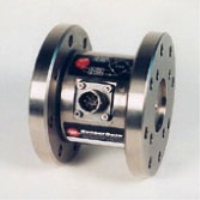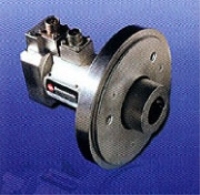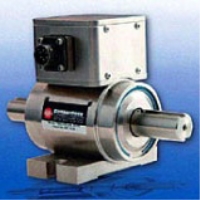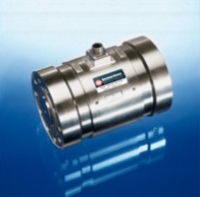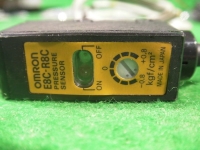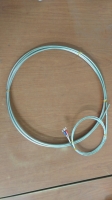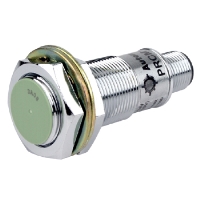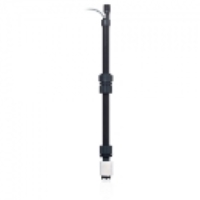상세설명
|
The T261 rotary transformer coupled torque sensor was designed for in-line testing of motors, engines, transmissions, propellers, pumps, drivelines, and similar rotating devices. The T261 has greater stiffness, less rotating inertia, and smaller size than comparable models available from other suppliers. The T261 requires the use of AC carrier strain gage signal conditioning electronics such as SensorData’s i200. The optional zero velocity speed sensor is installed inside the T261 housing. Interconnecting cable assemblies are available as an option. SensorData will provide in-house calibration of the T261 with customersupplied electronics for a fee. |
SPECIFICATIONS (Subject to change without notice) | |
| Rated Fatigue Capacity | 5K, 10K, 20K lb-in |
| Rated Speed | 10,000 rpm |
| Nonlinearity | 0.05% of rated output |
| Hysteresis | 0.05% of rated output |
| Nonrepeatability | 0.02% of rated output |
| Rated Output, bridge, typical | 2 mV/V |
| Zero Balance | +/-0.5% of rated output |
| Temperature Range, operating | -20 to +200 F |
| Temperature Range, compensated | +68 to +170 F |
| Temperature Effect on Output | 0.001% of load/F |
| Temperature Effect on Zero | 0.001% of rated output/F |
| Bridge Resistance, typical | 350 ohms |
| Excitation | 2.8 to 5 VAC rms, 3 kHz to 5 kHz |
| Insulation Resistance, bridge to case | >5000 megohms at 50 VDC |
| Input voltage, speed sensor, Vcc (optional) (1) | 4.5 to 24 VDC |
| Maximum Load, safe (2) | 200% of rated capacity |
| Maximum Load, ultimate (3) | 400% of rated capacity |
| Number of Bridges | 1 |
| Weight | 11.5 lb without i200, 12.5 lb with i200 |
| Construction | SAE 4340 alloy steel with satin nickel finish |
| (1)Temperature gradients caused by higher excitation voltages may effect performance. (2) With load centered, maximum load that can be applied without producing a permanent shift in performance characteristics. (3) With load centered, maximum load that can be applied without physical damage. | |




